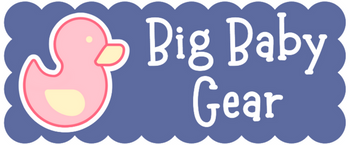Product Care
PART 1: WASHING CLOTH DIAPERS
PART 2: WASHING PLASTIC PANTS
PART 3: WASHING RUBBER/LATEX PANTS
PART 4: WASHING PUL COVERS
PART 5: DRYING PRODUCTS
PART 6: MORE PRODUCT CARE HINTS & TIPS
PART 1: CLOTH DIAPER CARE
After purchasing:
All cloth diapering products MUST be prewashed at least once prior to use. Thicker, heavier diapers and inserts should be washed three times and dried once to ensure optimal absorbency. (If not pre-washed as prescribed, the cloth will actually repel moisture instead of absorbing it.)
After using:
Soiled diapers should be stored in a water-resistant, odor-proof pail, container, or bag. Remove any solids (feces) prior to placing soiled diapers into the container.
Do not rinse washable items or immerse them in water until ready to launder. The longer a diaper sits wet, the faster it will wear out. The best way to preserve your diapers is to keep them as dry as possible between washes and to carefully follow the remainder of our care instructions.
Ready to wash?
1. Rinse soiled diapers. This can be done in a (clean) toilet or in a pail. Add cold water and a cup of Borax, baking soda or vinegar to soak.
2. Choose a Detergent
• Do not use any detergent that contains natural oils or fabric softeners. These will coat the absorbent fibers of the diaper and cause liquids to be repelled.
• Make sure you're choosing a detergent that contains enough surfactants to get your diapers clean. Diapers are more heavily soiled items, with multiple layers of fabric, compared to your regular laundry.
• Avoid any detergent that contains sodium percarbonate or bleach.
• Avoid detergents that have ingredients you are sensitive to.
• Avoid any detergent that contains enzymes as they can cause rashes.
3. Washing - Machine wash with a mild detergent and water.
Part 2: PLASTIC PANTS CARE
Plastic / Vinyl Covers
For best results, rinse them as soon as possible after each use. Urine & fecal matter are both highly acidic and can cause stiffening & cracking. Prompt rinsing is ideal. Also lotion or oils that may get on the plastic pants can break down the vinyl, shortening the life of your plastic pants.
"Rinse" isn't the same as "wash!" ... This is because soaps and detergents can remove or leech-out plasticizers in the vinyl material that help keep the pant soft and pliable. If it is occasionally necessary to wash them: Hand wash with a mild detergent (a small drop of dish soap works great) and warm water. Hang or towel dry.
Part 3: Latex / Rubber Care
Latex & Rubber Covers
Hand wash with water and a delicate detergent. Machine washing is not recommended, but if absolutely necessary the rubber pant should be put into a mesh bag and washed on a delicate cycle. Hang to dry. Once dry, store away from the sun and apply powder (unscented powder or cornstarch) to extend the item’s life, as well as to remove oils and moisture.
Part 4: PUL Cover Care (Laminated Fabric)
PUL Covers (such as The Silence Pant)
Waterproof PUL pants can be washed in a washing machine and dried in a dryer on low-medium temperatures just like your regular laundry. Use warm water and a full wash cycle. Pre-wash with detergent if heavily soiled.
Part 5: DRYING PANTS AND OTHER PRODUCTS
Plastic/Vinyl Pants: Pat clean pants with a towel first, then allow to air dry.
Hang drying is recommended, if possible, although a dryer can be used if noted in the sections above. The best way to dry covers is be using the ‘delicate setting’ and then with air only (no heat).
Inserts, boosters, fitted, and prefold cloth diapers can be machine-dried on medium or hung to dry.
We recommend not hanging items directly over a radiator or any other dry heat source, as this will prematurely age elastics, can lead to melted laminate, and shorten the life of your waterproof materials. Also do not hang dry in a high-humidity location, such as a shower or bathroom.
When machine drying, do not use “dryer sheet” style softeners. We recommend wool dryer balls, which are reusable and fragrance-free.
Part 6: More Product Care Hints
Storage:
Shelf or drawer storage is preferred, or hanging if available. Storage area should be room temperature (not too hot, not too cold).
Keep out of direct sunlight. Avoid contact with products that contain petroleum or other oils; also avoid contact with lotions, creams, ointments, body sprays, and fabric softeners in any form.
Stain Prevention & Removal:
For Cloth Diapers & Doubler pads:
Pre-washing your diapers with vinegar is an excellent way to reduce future stains. Vinegar "sets" the fabric and may prevent staining altogether. We suggest doing the first wash using the cold cycle with one cup vinegar only. Then follow with three warm or hot washes with detergent and a run in the dryer after those washes are complete.
For Vinyl Plastic pants:
Often stains can be almost completely eliminated if the plastic pant is thoroughly rinsed right away after soiling. If the pant remains soiled for an extended period of time the stain will set and becomes virtually impossible to remove.
All products:
Oxi-Clean works well to brighten and also removes stains. Do not bleach.
